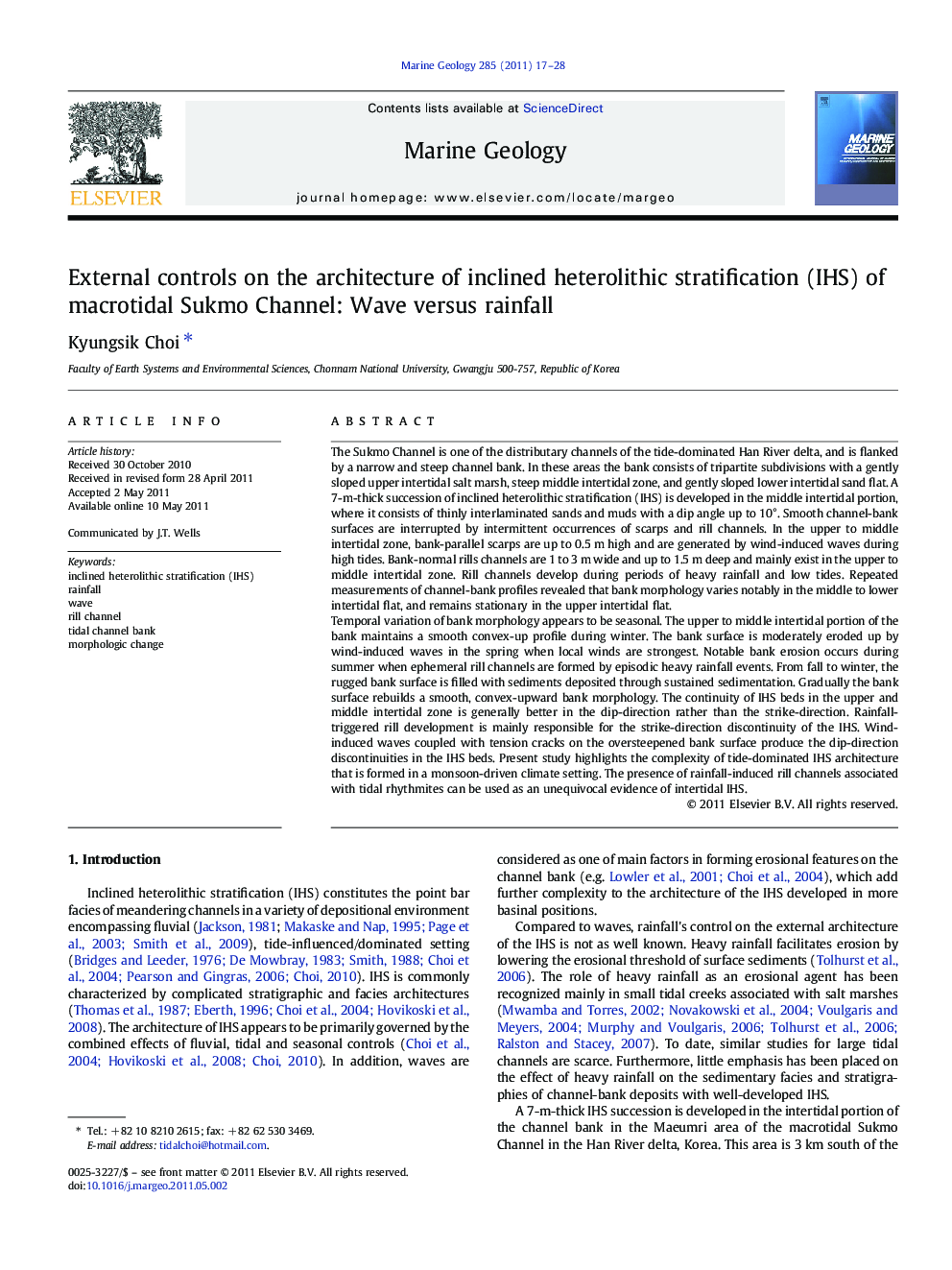| کد مقاله | کد نشریه | سال انتشار | مقاله انگلیسی | نسخه تمام متن |
|---|---|---|---|---|
| 4718712 | 1639135 | 2011 | 12 صفحه PDF | دانلود رایگان |

The Sukmo Channel is one of the distributary channels of the tide-dominated Han River delta, and is flanked by a narrow and steep channel bank. In these areas the bank consists of tripartite subdivisions with a gently sloped upper intertidal salt marsh, steep middle intertidal zone, and gently sloped lower intertidal sand flat. A 7-m-thick succession of inclined heterolithic stratification (IHS) is developed in the middle intertidal portion, where it consists of thinly interlaminated sands and muds with a dip angle up to 10°. Smooth channel-bank surfaces are interrupted by intermittent occurrences of scarps and rill channels. In the upper to middle intertidal zone, bank-parallel scarps are up to 0.5 m high and are generated by wind-induced waves during high tides. Bank-normal rills channels are 1 to 3 m wide and up to 1.5 m deep and mainly exist in the upper to middle intertidal zone. Rill channels develop during periods of heavy rainfall and low tides. Repeated measurements of channel-bank profiles revealed that bank morphology varies notably in the middle to lower intertidal flat, and remains stationary in the upper intertidal flat.Temporal variation of bank morphology appears to be seasonal. The upper to middle intertidal portion of the bank maintains a smooth convex-up profile during winter. The bank surface is moderately eroded up by wind-induced waves in the spring when local winds are strongest. Notable bank erosion occurs during summer when ephemeral rill channels are formed by episodic heavy rainfall events. From fall to winter, the rugged bank surface is filled with sediments deposited through sustained sedimentation. Gradually the bank surface rebuilds a smooth, convex-upward bank morphology. The continuity of IHS beds in the upper and middle intertidal zone is generally better in the dip-direction rather than the strike-direction. Rainfall-triggered rill development is mainly responsible for the strike-direction discontinuity of the IHS. Wind-induced waves coupled with tension cracks on the oversteepened bank surface produce the dip-direction discontinuities in the IHS beds. Present study highlights the complexity of tide-dominated IHS architecture that is formed in a monsoon-driven climate setting. The presence of rainfall-induced rill channels associated with tidal rhythmites can be used as an unequivocal evidence of intertidal IHS.
Research highlights
► Stratigraphic architecture of tidal IHS is complicated by waves and rainfalls.
► Wave-induced erosion scarps produce the dip-direction discontinuity of IHS.
► Rainfall-triggered rill channels create the strike-direction discontinuity of IHS.
► Rill channels and erosion scarps are suggestive of intertidal portion of IHS.
Journal: Marine Geology - Volume 285, Issues 1–4, 1 July 2011, Pages 17–28